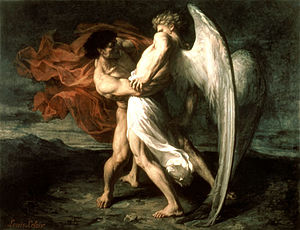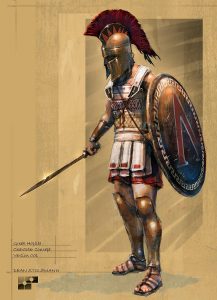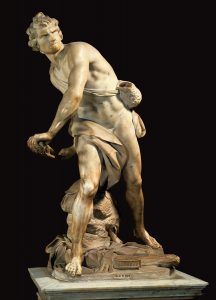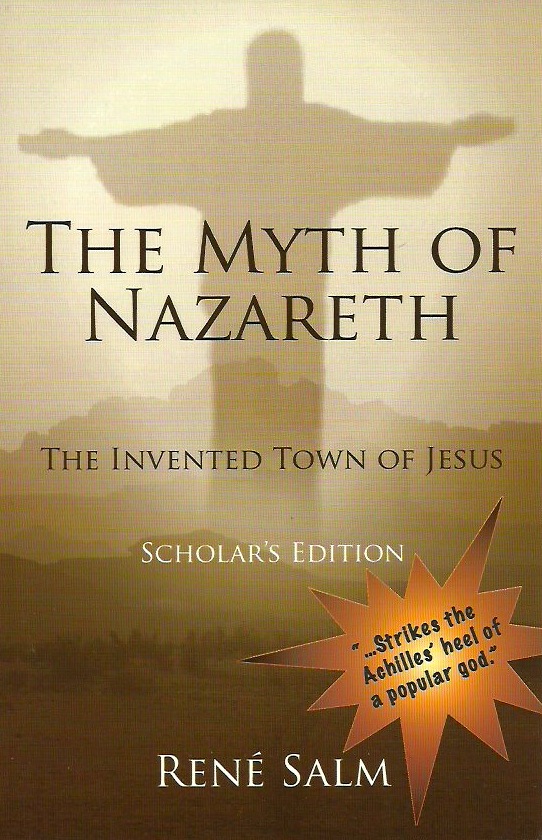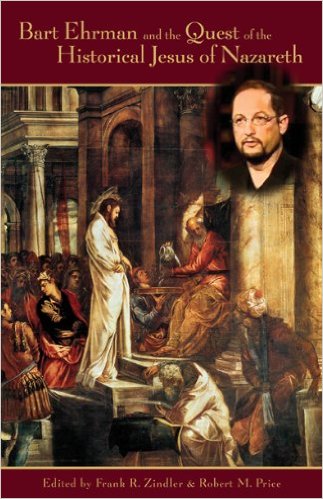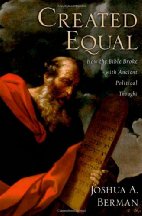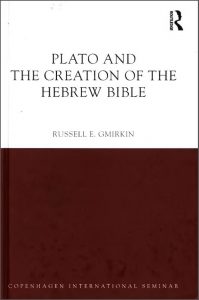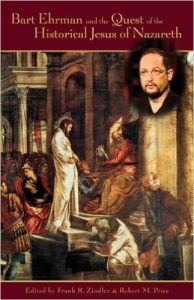
A new book arguing a mythicist case has been published. If you like your serious intellectual pursuits spiced with vicarious adventure then Vincent Czyz (a winner of the Faulkner Prize for Short Fiction) has written for you a novel that weaves its plot around protagonists gradually discovering Jesus was less a historical figure than a mosaic of facets of many ancient figures, both mythical and historical. As you can see from the side image we are talking about The Christos Mosaic. One reviewer describes it “a serious tome, which prompts readers to think“, a “scholarly novel that required serious research“.
Earl Doherty appears to have had a similar project in mind when he wrote a novel titled The Jesus Puzzle: A Novel About the Greatest Question of Our Time to complement his formal scholarly arguments. I enjoyed Doherty’s novel because it hit on the main points of his argument in easy to digest doses against dramatic backdrops and in that way producing a true “teach and delight” experience. Czyz’s novel is more action-packed than Doherty’s. It’s a mystery thriller set in the world of the black market for antiquities, peppered with a little sex and a little more violence, with the narrative ebbing and flowing through the main character’s discovery that the Jesus figure evolved as a mosaic of diverse religious ideas, motifs and persons.
Another “Christ Myth” novel that I read was Vardis Fisher’s Jesus Came Again: A Parable. That was first published sixty years ago but getting it published caused the author all sorts of grief back then. Fisher created his own version of the gospel but wrote it as a modern version of how the first gospel appeared to be written: as a parable, not as history or biography.
Perhaps novels like these are “mythicist” answers to apologist authors writing novels about encounters with Jesus or personal takes on what Jesus was like.
Vincent Czyz’s novel contains a “cast of historical characters” in the opening pages to prepare the reader for what is to come. The cast includes names like Judas the Galilean, Philo, Josephus, Simon Bar Giora, Ebionites, Papias, and Father Roland de Vaux. The entry for the last mentioned is:
Director of the Ecole Biblique et Archaeologique, a Dominican school based in Jerusalem. Deeply conservative, both religiously and politically as well as reputedly anti-Semitic, he grew up in France and ultimately led the international team that studied a trove of Dead Sea Scrolls and scroll fragments found in Cave 4 in 1952.
This is followed by a historical timeline listing events from 198 BCE (Judea coming under the control of the Seleucids) through to 95-120 CE (the composition of the Gospel of John).
Readers familiar with this topic will be particularly interested in Czyz’s Afterword. It is titled: Mythicists and Historicists. A couple of excerpts:
Clearly the idea that Jesus never existed isn’t new. What is new is that the idea is gaining currency. . . .
If you read Ehrman’s book without the benefit of having made some sort of in-depth study — formal or otherwise — of the Bible, or if you fail to give equal attention to the counterarguments of those who have, Ehrman’s case seems persuasive. It is rather convincingly refuted, however, in Bart Ehrman and the Quest of the Historical Jesus . . . . In this collection of essays, Frank Zindler, Richard Carrier, and Earl Doherty, among others, take Ehrman thoroughly to task, highlighting some rather unscholarly mistakes and some that are downright embarrassing.
Czyz describes the reading that led him to question the historicity of Jesus, his critical engagement with both mythicist works and mainstream works (e.g. Burkert, Koester) on ancient religions, mythology and the Christian gospels. Robert Price and Earl Doherty are singled out for special influence on his thinking.
The intellectual exploration of the novel takes us through not just Q but the hypothetical earliest layers of Q, Q1 and Q2, the Logos, Philo’s heavenly Adam, Wisdom Sayings, Cynic philosophy, the Therapeutae, the Gospel of Thomas, Mystery cults, Josephus and key figures in the Jewish War, Greco-Roman deities, the Bacchae, and many more.
Finally towards the end we read how the various parts of the mosaic were coming together in the mind of the inquisitive Drew:
But after the destruction of the Temple in 70 AD and the reestablishment of Roman hegemony, Mark sees the futility of a military messiah and cobbles together a spiritual redeemer . . . from pieces of other religious leaders, pagan magicians, messianic figures, and Paul’s letters. Why else does Christ talk sometimes like a Cynic, sometimes like John the Baptist, sometimes like a Zealot, sometimes like James the Just?
Mark’s gospel was not a deliberate deception. It was part of a tradition. It was midrash — religious fiction. Allegory. Entirely acceptable at the time. Wasn’t Serapis a composite god? Weren’t the rites of Mithras grafted onto the Saturnalia? Even the Qumran community did the same thing in its own way: past scriptures were interpreted as though they applied to the first century AD. . . .
After acknowledging Frank Zindler’s hope that he will see in his lifetime “the recognition that Jesus of Nazareth is as much a mythical figure as Osiris or Dionysus”, Vincent Czyz professes to be “somewhat less ambitious”:
I hope this novel will lead readers to do their own research . . . and perhaps heed Emerson’s exhortation to establish “an original relation to the universe.” . . . It is time to stop looking outside ourselves for a savior and start doing work on our own.
I must confess that the intellectual play interested me more than its fictional stage setting. But that’s probably just me. I have not taken up fiction reading in a serious way for a long time now; non-fiction dominates my personal craving at the moment. There may be an occasional detail in the novel that some readers would find problematic, but that’s the case with most serious arguments that we read. Those details do not sidetrack us from appreciating the main journey and fresh insights into old information.

